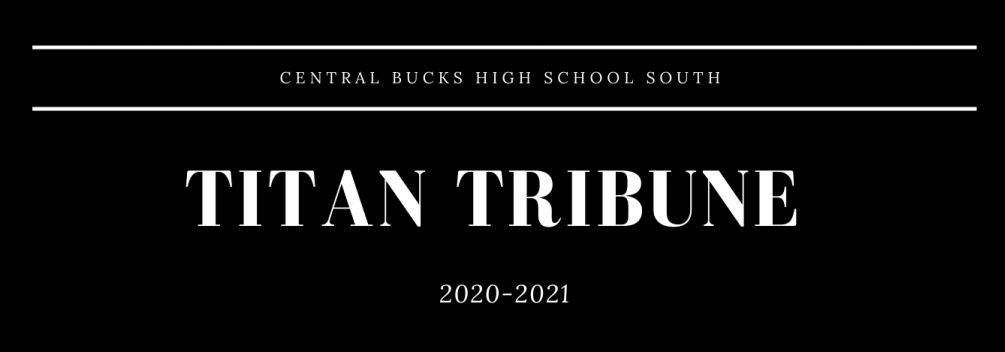The Present Paradox: Commercialized Holidays
A little boy, bleary-eyed and delighted, sprints from his bed early one December morning. An unusual box sits, large and looming, in the center of the living room floor. Confused, he peels away the Christmas wrapping paper to find advertisements and sales for the latest toys.
Growing more and more perplexed, he rips through Valentine’s Day paper, pink and coated in doilies, to unveil a plethora of cards and unwanted candied hearts. Green shamrocks await the boy at the next layer, as well as shamrock headbands and necklaces for no one. But nothing is as blinding as the Easter coating, with plastic eggs, bonnets, and cards with bunnies. Car sale clippings, accumulated from Memorial Day, Fourth of July, and Labor Day, cover the next level. And finally, after stale Halloween candy and a pile of Black Friday advertisements, the box falls away.
When he asks his parents, who had been hovering in the background, what his gift was, they sigh and answer, “We got you consumerism.” But what his parents didn’t know was that the spirit of the holiday–the glowing remnants of the box, the shimmers and flecks of authenticity in each shell–was what we had wanted all along. Though Americans are subliminally pulled by the magnet of consumerism, the commercialization of celebrations has, in many ways, created a society that has opened its arms before its wallets and has bettered itself through its growing list of holidays and festivities.
Rightfully making a big deal out of holidays has been an annual occurrence throughout my childhood. Every Valentine’s Day, my brothers and I awake to find a string of red and pink lights draped across the house, a table set with heart shaped décor, and a woman, my mother, at the center of it all, making heart shaped pancakes in the kitchen. Once we sit down at breakfast, we find a bag at each of our places filled with immense amounts of Hershey’s kisses and gummies and heart shaped Peeps and small, inexpensive gifts.
This day, which is all about showing people how much you love them in goofy ways, is epitomized by the way in which we celebrate it each year. We never ask my mother for Valentine’s Day gifts, and the holiday would mean the same without them, but we always appreciate the effort my mom puts into making this day special. Sure it seems a bit cheesy to an outsider, but it’s a tradition that I love to uphold. It’s not the crepe paper and chocolates that make it special, but the kind of love that embodies what this day is all about.
With all of the Valentine’s Day “purchases,” superficial commercial interests seem to be the only ones at work; however, under all the packing peanuts, these holidays truly uphold the capitalist system while simultaneously bringing communities together. As the advertisements and media display, holidays have become increasingly lucrative endeavors by business around the nation. But why is this commerce such a bad thing? In 2012 alone Americans spent $126.03 per person and collectively purchased 72 million cards on Valentine’s Day. And that’s just for one holiday.
The generated income for business peaks like no other day during the 24 hour extension of Thanksgiving—Black Friday. The mobs that flood almost every store during the wee hours of a Friday morning are a testament to the powerful economic current largely attached to the commercialization of Christmas. Yes, is it sometimes a ridiculous display of American consumerism? But for an economy ridden by crippling national debt and coming out of one of the worst recessions in 40 years, this increase in commercial activity can only improve the overall economic health of the nation.
And most importantly, this money is, for the most part, not going into the hands of the greedy, money-gulping corporates that everyone imagines. A display of just the opposite, Small Business Saturday was created by American Express in 2010 to increase the sales at the nation’s small businesses.
It celebrates the businesses with the window decorations for our favorite holidays. It recognizes the ones who sell us the Christmas ornaments or the Halloween decorations or the Valentine’s Day cards or the Memorial Day bows. And the $5.7 billion worth of purchases at independent merchants in 2013 put the money we spend for all these holidays and so much more back into the pockets of those who do so much to make special occasions, as well ordinary days, meaningful. Financial desires, rightfully working to improve the individualistic America we hold dear, annually make the nation just a little bit smaller.
Though businesses seem to extrapolate all the value, sifting through any American calendar or browsing through any Wal-Mart, it is apparent that the kind of attention to cause we bring to holidays popularly denoted as “insignificant” makes those celebrating feel anything but. A holiday is not simply a holiday because a few people woke up and decided to make it one, though as Marlo Anderson, the founder of a North Dakota holiday tracker, attests; it only takes six people to do so. Holidays have, since their creation, had a cause—no matter how many people validate it. From IHOP’s International Pancake Day to National Secretary Day to Pascua Florida Day, Americans fight strongly to raise awareness for the things they feel are important.
Mother’s Day, one of the most commercialized holidays, was founded by Anna Jarvis to finally celebrate the female achievements that often go unrecognized. Just because flowers, cards, and gifts have now been added to the mix does not mean the cause itself is scathed by the “claws of consumerism.” But perhaps the greatest achievements of the “Hallmarkization” of celebrations have been in the increase of consciousness for religious celebrations that would’ve otherwise slipped under the social current.
Naomi Borrebach, a writer for the University of Pittsburgh newspaper, accounts the “benefits to mass commercialization, including acceptance and tolerance” for minority religious faiths. Half a century ago, if asked what Chanukah, Yom Kippur, Passover, Kwanzaa, Ramadan, or Eid al-Fitr were, the majority of Americans would have no idea. Maybe today many still have no idea these holidays’ true meanings, but a greater realization that they even exist is a large stride in the right direction.
As a member of the Jewish faith, I am amazed by how much has changed, even over the course of my lifetime, as the holidays and their marketability have. I walk into Wegmans now and am greeted by a front display with Passover items. I walk into Bed, Bath, & Beyond to find Chanukah related products taking up the same amount of space as Christmas related ones. In essence, adding holidays onto the price tag allows Americans to stock more worthy causes and set a value for consciousness and open-mindedness.
Once awoken by the alarm of festivity, Americans use these holidays, through the power of consumerism, as reminders to do good in the world. Once these celebrations become annual traditions, as was their intent all along, they give us reason to leave the daily grind and go out of our way for a cause. But many quip, “Shouldn’t this be something we do every day?” It should be. But in the blur of the hectic, fast-paced America it’s hard to remember what to pick up at the grocery store, let alone how to engage in acts of charity each day.
In a world where we have to focus so much of our efforts on our own lives, we need holidays as a way to refocus our attention. We need a reason to wake up early on the 14th of February to stuff bags of candy for our family. We need a reason to go out to the store the night after Thanksgiving to buy gifts for our family and friends. We need a reason to buy Mother’s Day cards for our mothers, grandmothers, and aunts. Gifts, no matter the denomination on their bar code, are an act of generosity.
Furthering that notion, some holidays and organizations have made consumer culture into a vehicle for even larger acts of charity. Many stores create opportunities around the holidays for customers to donate to charity or for the store to donate a portion of a purchase to charity automatically. Macy’s recently had a promotion for which, if children wrote letters to Santa and parents made purchases, Macy’s would donate to the Make a Wish Foundation on the family’s behalf. Even IHOP’s International Pancake Day has raised $16 million for charity. Giving to others through the tangible or intangible by-products of consumerism during the holidays doesn’t change the act of goodwill that the celebration has reminded Americans to do.
The scrooges of Hallmark holidays attack their foundation, equating them to undermining holidays’ greater purpose. They feel that the true causes and values in each holiday are concealed by the bow of consumerism—shiny and manipulative. But Americans, even through all the sequins and lights, still hold firmly to the beliefs that gave each holiday its start. Christmas is still Christmas, Valentine’s Day is still Valentine’s Day, and Veterans Day is still Veterans Day.
The only thing that has evolved over time is the way in which we now express our love and wishes on these days. It used to be more inward and intangible—some nice gestures and spending time with family and friends. But though our wallets have deepened, our consciences have not shallowed. Just because there are material and immaterial ways to express appreciation and celebration, it doesn’t mean that it has directed any of the focus from the greater message. A plastic Barbie doll, a toy plane, or a box of chocolates can never replace the feelings of a person. Objects are simply symbols, vehicles for conveying morals, religions, or values—underneath all the frills.
The most hated corporation in America is the one that spreads your love and best wishes. Its criminal mastermind makes the small gifts that make grandchildren smile, grown children giggle, and adults feel a bit more special that they usually do. Its malevolent ways make it possible for each month and year to come with another cause for celebration. (And it churns out a suspicious number of stuffed animals.)
Yet at its core are its most despicable features. It connects you with family, friends, and those you wish to communicate with. It creates the holidays that express the thoughts you don’t remember to address. And worst of all, it weaves some moral fiber into the modern world. Disgusting as it is, it epitomizes America’s beliefs and helps to spread them. The sheer horror.


